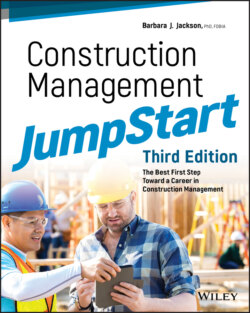Читать книгу Construction Management JumpStart - Barbara J. Jackson - Страница 110
The Construction Project
ОглавлениеAs discussed in Chapter 1, construction projects are extremely diverse and come in every size, shape, and flavor. However, some characteristics about construction projects are common to all types, and these characteristics clearly distinguish them as unique from other industry sectors.
When we build a computer, a piece of furniture, or even an airplane, we typically build a prototype first and then test it and work out the bugs before we put it into production. We do all of this under controlled conditions, using state-of-the-art mechanics, robotics, and technology. These projects are usually built utilizing a relatively constant workforce, standard parts, and stable materials.
Now let's take a look at the construction project. Every project is built as a one-of-a-kind facility, which means that each is built on a different building site, under variable weather conditions and particular environmental and topographical conditions. Each one is a prototype in and of itself. There is no testing it first to make sure it works. Instead, the bugs get worked out as we go. Our workforce is primarily transient practitioners of an assortment of trades moving from job to job as assigned, coming in and out of the process at various stages throughout the duration of the project. Although more automation is being utilized, for the most part, our labor is still performed by the human hand—laying the brick, forming the concrete, and setting the steel. Finally, many of our materials, such as lumber, concrete, and steel, are sourced from nature-made components. They react to the heat, the cold, and the humidity on any given day.
In spite of these uncertainties and unique circumstances affecting the project, a construction manager is expected to deliver a high-quality facility on time, within budget, and accident free. That's one heck of a management challenge, to say the least! But let's identify exactly what it is that we are trying to achieve. The primary objective of the construction management function is to control three main factors or values. They are time, cost, and quality. These three factors are commonly referred to in the industry as the three-legged stool.
However, there is actually one more very important factor, and that is safety. Construction can be a dangerous business, and safety must be the foundation upon which all other values are placed; without it, the whole project is at risk.
Let's take a closer look at all the factors that influence the construction project and how the construction manager considers each of them as part of the management challenge.
